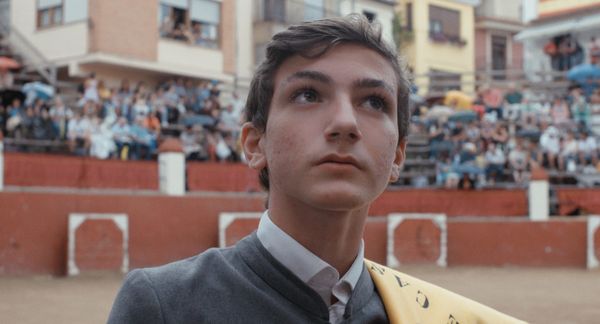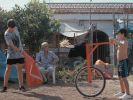Eye For Film >> Movies >> The Boy And The Suit Of Lights (2024) Film Review
The Boy And The Suit Of Lights
Reviewed by: Amber Wilkinson

This delicately observed documentary - expanded from Inma de Reyes graduation short film To Be A Torrero - follows pre-teen Borja Miranda as he tries to fulfil his family’s dreams by becoming a bullfighter. Archive footage indicates the historic importance of bullfighting to Castellon, north of Valencia, even if time and public opinion are no longer universally kind to the pursuit.
In the Miranda family, however, and particularly for Borja’s grandfather, bullfighting isn’t only about acknowledging the past, it offers the potential of improving the family’s straitened circumstances in the present. This isn’t a forceful demand but more of a sort of bath of permanent casual coercion stemming from hopefulness and a cycle of generational expectations. Borja takes the importance of doing anything to improve his family’s lot to heart, with the possible exception of waiter work, something we learn in one of the film’s lovely observational sequences involving his mates.

As we watch the introverted Borja playing with his more extrovert younger brother Erik, we can see how their lives are criss-crossed by the bullfighting pursuit. The boys go to the bullring - where, animal lovers will be pleased to learn, de Reyes focuses on their reaction to the spectacle rather than the fight itself. On family visits, Erik helps Borja practise his stance by racing towards him with a bull’s head on wheels, while his grandad offers him advice on technique.
At home they’ve mocked up a bullring using everything from Teletubbies to Nativity scene participants and Playmobil characters sporting the inside of a biro as a picador’s lance-like vara. These sorts of activities bring home how young they still are and make it all the more incredible to think they might soon be squaring off against 150lb of angry and horned Sunday lunch.
De Reyes’ dedication to this story pays off, in part, due to the time she has invested in the project. Slowly we watch as Borja ages onscreen, shooting up in height and losing his baby-faced attributes as his voice drops. We can also detect a subtle shift in his attitude as the years go by.
Borja doesn’t speak directly to the camera, as de Reyes explained, he’s on the shy side for that. While that does mean we can only guess at what he is thinking some of the time, Erik turns out to be a pretty good stand-in for the viewer, often asking things that we would like to know thanks to an abundance of youthful curiosity.
The observational nature of the film, in general, means there is a certain looseness - issues of politics and anti-fighting demonstrations, for example, drift in and out rather than becoming firm sub-strands. De Reyes’ approach, however, has the advantage of capturing the wider fabric, so we can see the cyclical nature of these traditions being passed down. Borja isn’t the only one making sacrifices, as we see his mum negotiate payments for a matador’s outfit for him. De Reyes film celebrates family bonds, while also noting how those ties can bind youngsters’ ambitions.
Reviewed on: 17 Jun 2024














